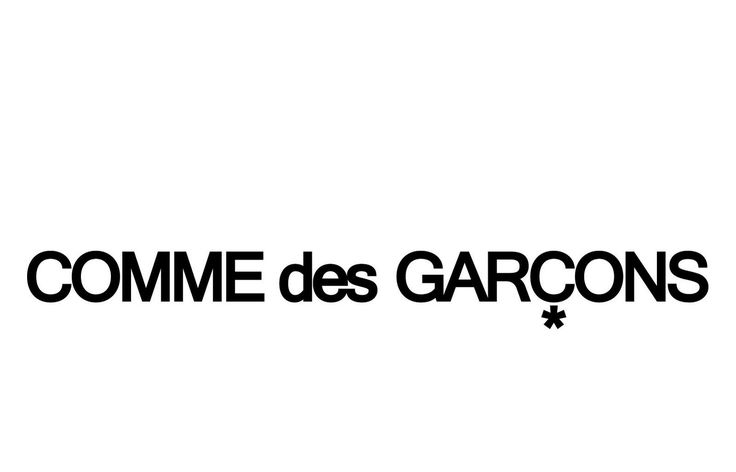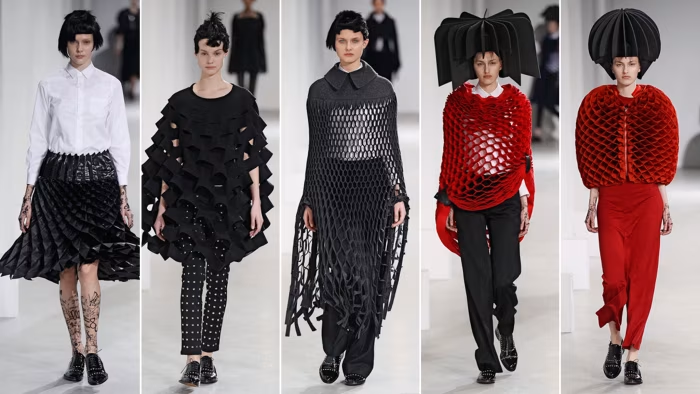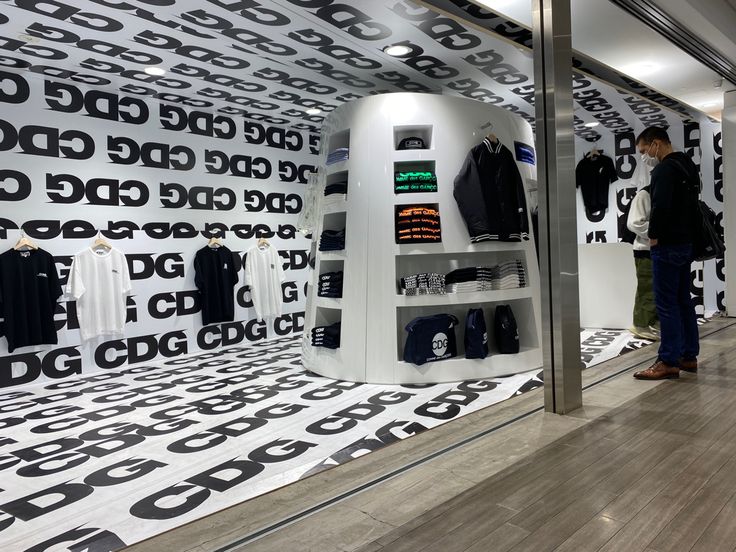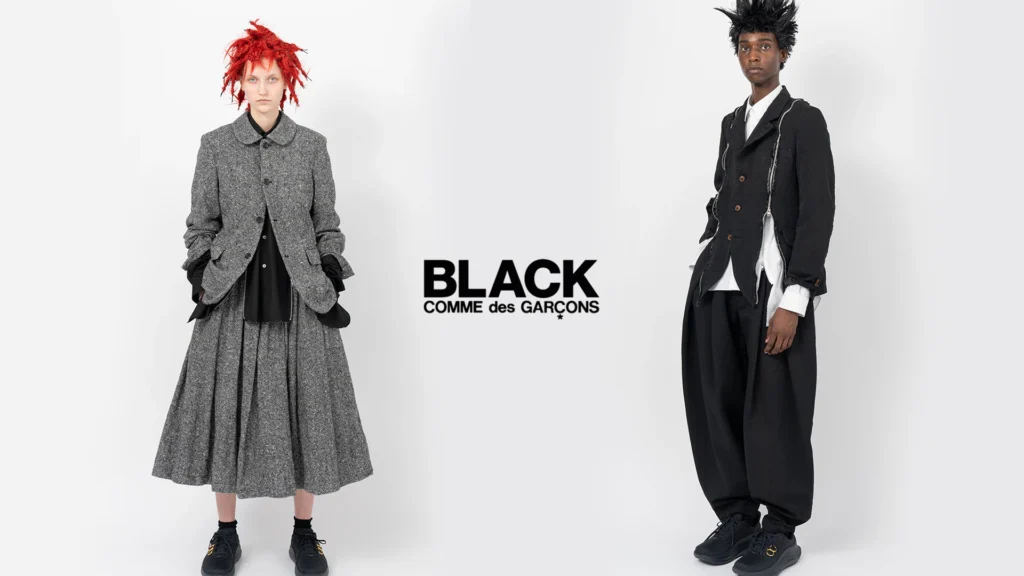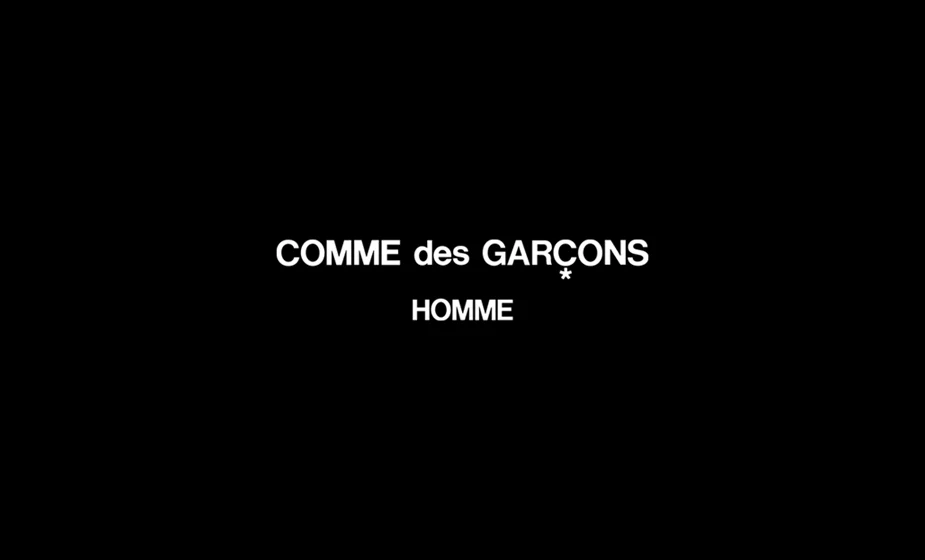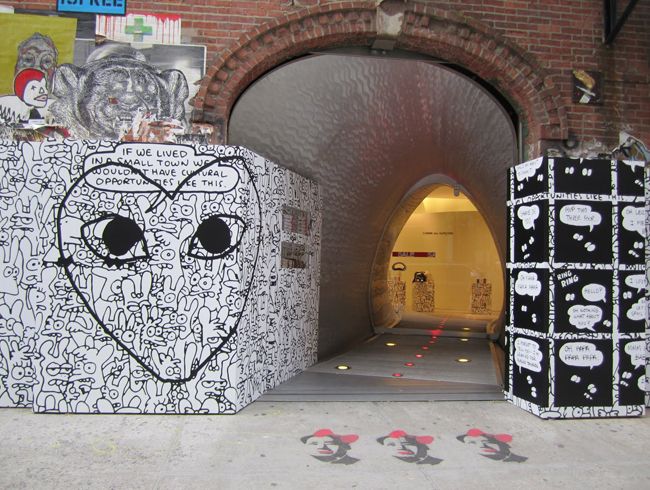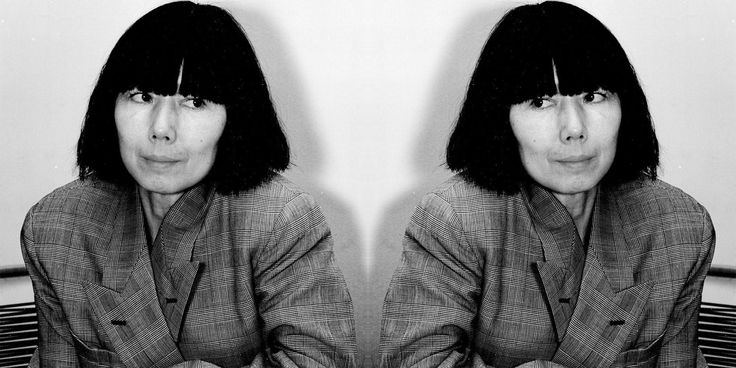Enter Dover Street Market and you will know at a glance- this is not a shop. It is a manifesto in the flesh. When she first opened the first DSM store in Mayfair near London in 2004, Rei Kawakubo did not simply build another retail area. She destroyed all the traditions and norms of fashion sales.
The idea was brought about by the frustration of Kawakubo with the sterility of traditional stores. Clothes were placed in the department stores in the uniform racks under fluorescent lighting. Minimalism and silent luxury were the priorities of the boutiques. It all seemed predictable, safe, dull. Comme des Garcons required a retail space that aligned with the radical vision of the brand, something that viewed shopping as culture and not as a business.
The result was perhaps the biggest retail innovation in the 21st century of fashion. Dover Street Market was making shopping a gallery-hopping experience, ma merchandise and art installations, and a place where people can visit a store even when they have nothing to purchase.
The Beautiful Chaos Philosophy
Rejecting Retail Conventions
Fashion traditional retail is guided by formulas. There are minimalist white walls that display clothes that are arranged by colour or type. All of it looks clean and well organized, and it was made to fade away in order to allow the merchandise to speak. Kawakubo considered it a fundamentally incorrect method, boring the customers and depriving them of the emotional thrill that would come with the realization of something new and unexpected.
Dover Street Market is the home of beautiful chaos rather than sterile order. Merchandise is arranged in unusual groups that compel buyers to slow down and take a look. The combination of industrial fixtures and antique furniture, and modern art, in a mix that is both intentional and accidental, is present. The aesthetic is purposefully unfinished, and the impression is that the space is always being built or renovated, and all the conventions concerning what a luxury retail space should be like are being broken.
The Installation Art Approach
All brand spaces in Dover Street Market are independent art installations instead of conventional shop-in-shop concessions. Kawakubo encourages designers to build spaces that can be used to communicate their brand philosophy, not featuring products placed on standard racks. Depending on the individual perception and aesthetic asense of each designer, the outcomes are minimalistic, mid-level, and extravagant.
Comme des Garcons spaces at DSM are an example of this strategy, where each season, there is a rotating installation that surprises the shoppers. One installation could have clothes suspended on ceiling chains in an industrial warehouse style that gives the illusion of clothes being suspended in the air. The other season is going to introduce the clothes onto abstract sculptural constructions that hardly bear resemblance to classic mannequins and make the audience rethink the connection between body and garments.
Constant Reinvention
Dover Street Market is redesigned in its entire space 2 times every year, according to the fashion seasonal calendar. The whole store virtually goes to the redesigning stage, where groups of people tear down the current installations and construct completely new spaces. Such would be financial madness to conventional retailers who spread the cost of fixtures over years, whereas DSM sees reinvention as an investment that is needed.
The redesigns maintain a fresh shopping experience for the regular customers who otherwise would grow bored with the shopping experience. Fashion insiders come to visit both spring and fall seasons, and they have entirely different spatial experiences, which makes them make repeat visits and maintain engagement. The perpetual flux is a reflection of the Comme des Garcons attitude towards fashion, which is never to stagnate in the same formula, but to advance, never to resort to the same formula, but to evolve as a form of comfort.
This is a pledge to reinvigorate rather than just reposition the already existing fixtures. DSM contracts artists and designers to develop completely new installations, furniture, and spatial ideas each time he redesigns. The kind of money that would be spent on such changes would be distasteful to traditional retailers who tend to maximize profits; however, Kawakubo knows that it takes more than common retail knowledge to create cultural destinations.
Global Expansion Strategy
London: The Original Vision
The original Dover Street Market London was launched in 2004 in an old warehouse on Dover Street in Mayfair. Even the site defied the principles of luxury retailing–instead of the prime real estate on Bond Street, Kawakubo needed to occupy a place that off-the-beaten-path, making customers have to go out of their way to find it. This placement narrowed down to people who were interested in fashion and not casual luxury buyers.
This was because it was a six-story building that offered vertical space, which Kawakubo used to turn it into a trip through the use of modern-day fashion. The floors were designed to provide varying ambiance and brand selection, giving the visitor a reason to visit all the floors of the building instead of making similar snap-buying decisions. The Rose Bakery on the top floor turned out to be a place of its own, relaxing and refreshing those who came to spend more time in the surroundings.
DSM London also gained the instant attention of fashion pilgrims across the globe who made the store a must-visit on their London visits. The space was transformed into a cultural landmark as opposed to a retail space, which fashion students, designers, and enthusiasts approached like a free museum of fashion of the modern world. This cultural positioning was the demonstration of the thesis by Kawakubo–retail could go beyond commerce to become a really valuable cultural experience.
Tokyo Ginza: Japanese Precision
In 2006, the concept was introduced in Dover Street Market Ginza, which introduced the concept to the home market of Kawakubo with a very Japanese execution. The Tokyo branch is housed on seven floors at the Ginza shopping centre, which has been identified as one of the most important and ambitious markets. The high level of fashion knowledge of Japanese customers allowed DSM Ginza to present even more experimental designers and ideas, more than the original location in London could.
The Tokyo space is meticulous and detailed with the Japanese aesthetic value tradition, without discarding the philosophy of the beautiful chaos. All the details are taken into care, with the lighting design and the flow of space being among the key details that make the environment seem improvised and well orchestrated at the same time. This equilibrium expresses integration of the Western, spontaneous, us, and the Japanese, perfection that characterizes a lot of Comme des Garcons design philosophy.
DSM Ginza is highly selective about which brands to display according to the tastes of the Japanese market, and yet retains an international outlook. Local designers are given prime space among others. global brands, reflecting Japan’s position as both fashion consumer and creator. The location has become mandatory destination for anyone interested in contemporary Japanese fashion, cementing Tokyo’s position as global fashion capital.
New York: American Expansion
The Dover Street Market New York in 2013 was a major step towards making DSM a retail force across the world. The 28,000-square-foot area at the corner of Lexington Avenue and Union Square is the largest location of DSM. The entry of the American market demanded some modifications but did not interfere with the fundamental philosophy, balancing experimental advantage with the commercial availability that is desired of luxury retail by the American consumers.
DSM New York unveiled the idea to the American fashion viewers who may have been familiar with the Comme des Garcons through the PLAY basics instead of experimental mainline collections. The shop enlightened new consumers about the world of avant-garde fashion and gave them viable points of access by way of a well-edited blend of experimental and wearable work. This educative role was very instrumental in creating American market value in a conceptual fashion.
Brand Curation and Discovery
Established Luxury Brands
Dover Street Market carries the brands of existing luxury houses such as Gucci, Prada, Celine, and Balenciaga, but presented in a manner that their own boutiques never do. A Gucci bag can be lying on a concrete block alongside old furniture and contemporary art instead of crystal glass. This situation compels customers to look at well-known brands with new perspectives, depriving them of traditional luxury connotations.
The trend is to pick out the most experimental and boundary-breaking pieces of each brand instead of the commercial bestsellers. DSM buyers select products that fit the overall aesthetic philosophy of the store, occasionally picking objects that are too challenging according to the buyers of the brands themselves to be sold in a mainstream retail store. In curation, a consistent overall environment is created, as opposed to a hodgepodge of competing brand identities.
Emerging Designer Platform
Dover Street Market also operates as an important resource to upcoming designers who do not have the means to secure independent retail space there. Some designers, such as Simone Rocha, Craig Green, and Molly Goddard, got exposed through DSM before they got their international fame. Riding on an untested talent has resulted in the opening of many careers within the store that currently constitute the modern-day fashion.
The financial model has been more helpful to the emerging designers than the traditional wholesale arrangement. DSM will frequently buy inventory and not require it to be consigned, which will give the designers the money to get the production running. This practice appreciates the fact that young designers require funds, and not exposure, to establish a sustainable business that can enable them to succeed in the long run.
DSM is international, and therefore an aspiring designer can have an international presence, as opposed to market-by-market. When a designer is in stock in DSM London, then it automatically becomes considered in Tokyo, New York, and any other location, which will boost growth that would otherwise take years to be realized. This international site has completely transformed the manner in which youthful designers can create brands in the modern fashion arena.
Exclusive Collaborations
Dover Street Market works with brands regularly to do exclusive collaborations with DSM retail. These mini collections create buzz and build hype; they offer content that is not found in other places. There are collaborations between existing brands re-interpreting classics and newer designers collaborating with heritage houses in unlikely pairings that both disrupt brands in a way that challenges both brands.
Comme des Garçons also makes DSM-exclusive items in their different sub-lines, such as the PLAY line, SHIRT line, and the Homme Plus line. These exclusives will provide loyal customers with an opportunity to receive items that can not be obtained at other retail outlets, as well as bring in traffic to the DSM stores. The strategy establishes a collector mentality in the customers who consider the DSM shopping to be a process of hunting for hard-to-find items and not just buying clothes.
The collaboration strategy is not limited to the fashion industry but has involved artists, musicians, and other cultural personalities who have been involved in products made by DSM. These interdisciplinary endeavors solidify DSM as a cultural institution, as opposed to a fashion retailer, and bring in customers who are concerned with a larger creative culture than just clothes.
Cultural Impact
Dover Street Market essentially redefined the nature of fashion retail operation in that it demonstrated that stores could be more experience than efficiency and culture than commerce. Conventional retailers have tried to emulate the idea with some levels of success, though very few have replicated the level of dedication to experimentation that is the core of DSM. The distinction is that Kawakubo has been ready to compromise short-term profitability for long-term cultural positioning.
Comme des Garcons demonstrated that radical retail innovation can be a commercial success and also creatively intact, as it did through Dover Street Market. The stores make an approximate of over 120 million in annual revenue on a worldwide scope, and they also serve as a cultural hub that determines the trend of fashion. This two-fold triumph indicates that considering the customers as intelligent, inquisitive members as opposed to passive consumerism establishes sustainable business models that are founded on authentic engagement as opposed to manipulative advertising.


